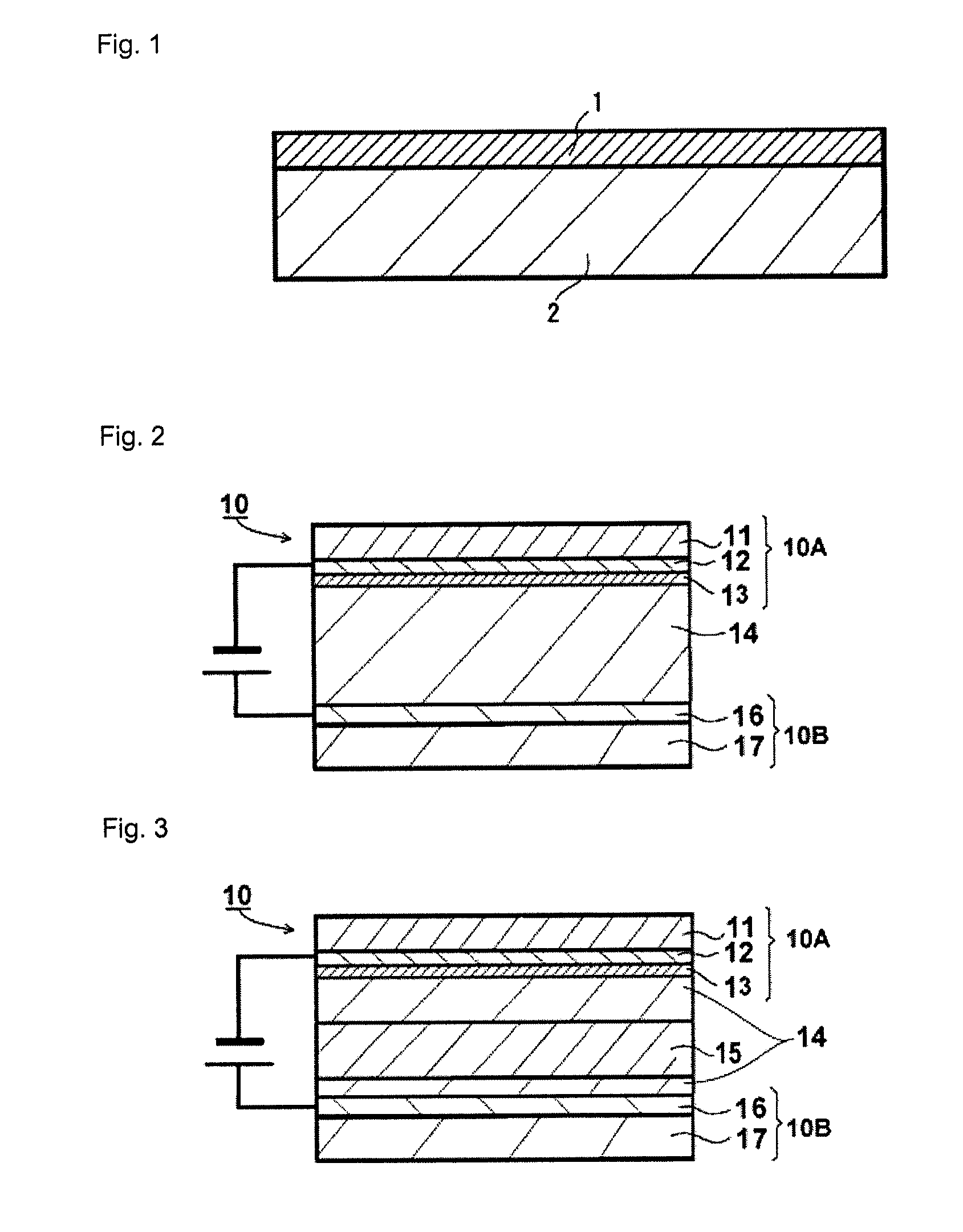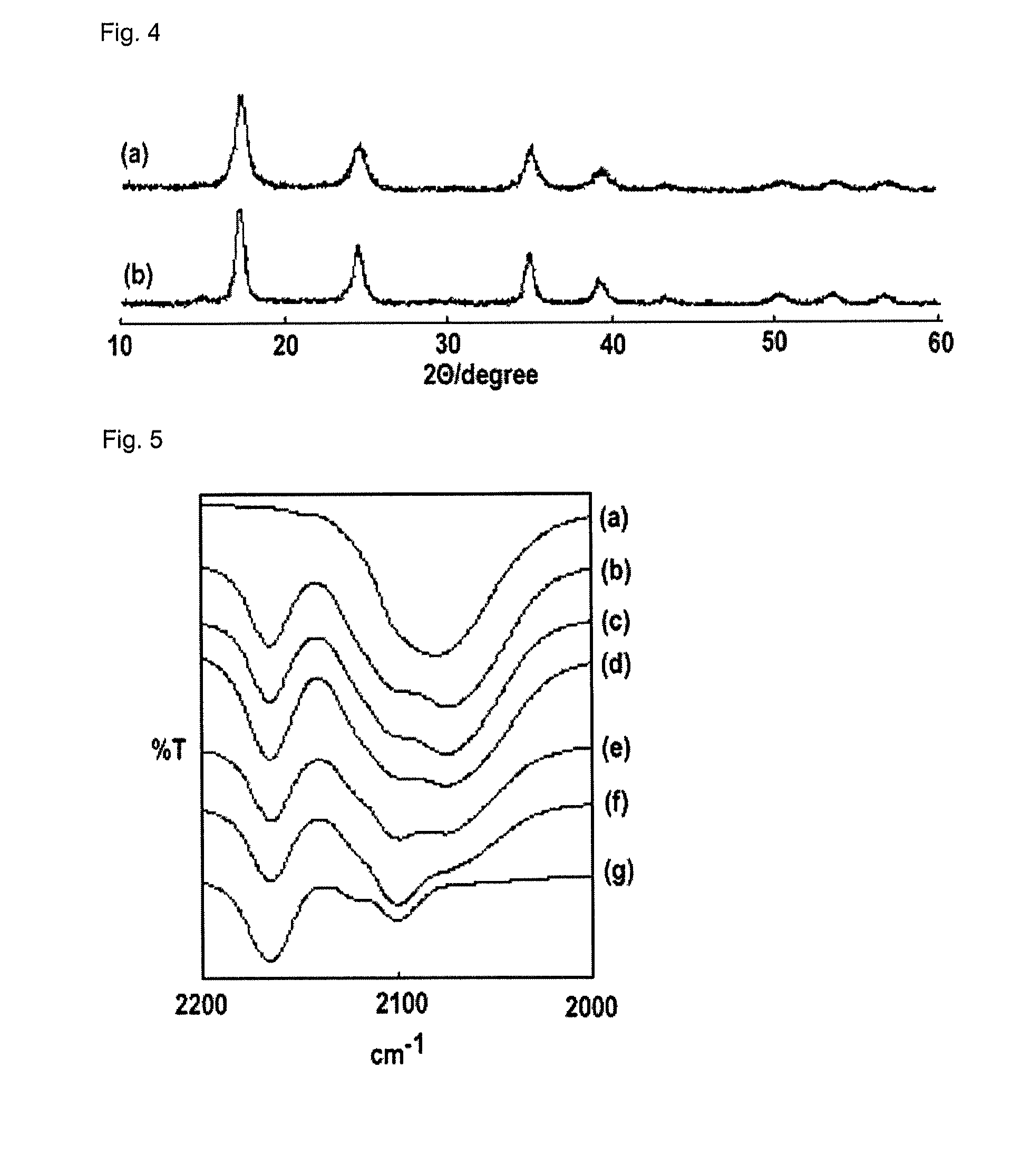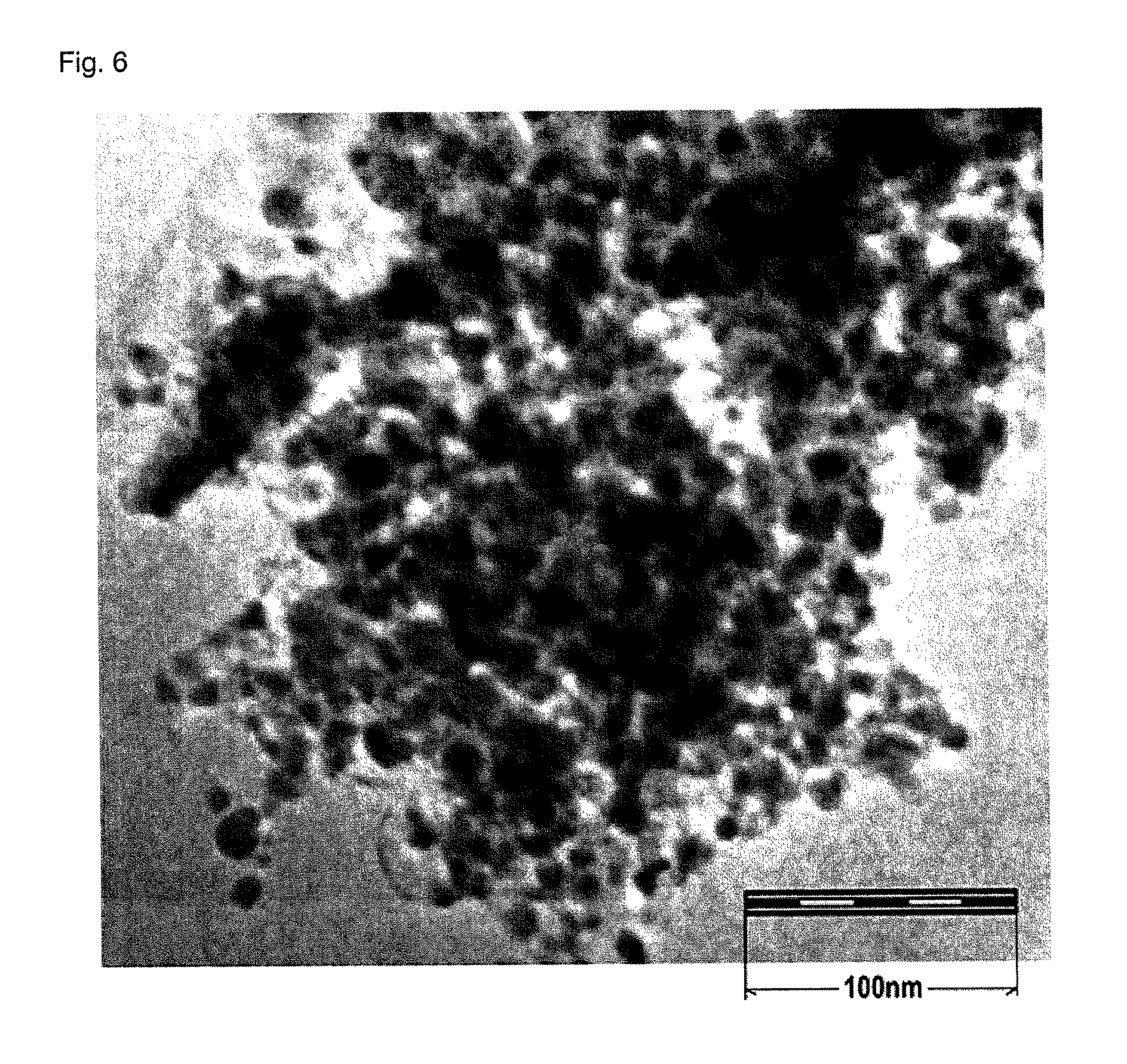Method of producing prussian blue-type metal complex nanoparticles, and prussian blue-type metal complex nanoparticles obtained by the method, dispersion of the nanoparticles, method of regulating the color of the nanoparticles, and electrode and transmitted light-regulator each using the nanoparticles
a metal complex and nanoparticle technology, applied in the direction of instruments, non-metal conductors, iron organic compounds, etc., can solve the problems of inability to achieve large-scale synthesis, inability to meet the requirements of large-scale production, and difficulty in handling soluble aminoethanol, etc., to achieve the desired structure and desired dispersion property, and be suitable for large-scale production. , excellent safety and handling ability
- Summary
- Abstract
- Description
- Claims
- Application Information
AI Technical Summary
Benefits of technology
Problems solved by technology
Method used
Image
Examples
example 1
Synthesis of Prussian Blue Nanoparticles Each Utilizing Ferrocyanide Ion as Coating Agent
[0142](A1) An aqueous solution prepared by dissolving 14.5 g of sodium ferrocyanide decahydrate in 60 mL of water was mixed with 30 mL of an aqueous solution prepared by dissolving 16.2 g of iron nitrate nonahydrate in water, and the mixture was stirred for 5 minutes. The deposited Prussian blue precipitate having a blue color was centrifuged, washed with water three times and then with methanol once, and dried under reduced pressure. The amount of the resultant in this case was 11.0 g, and the yield in terms of Fe4[Fe(CN)6]3.15H2O was 97.4%.
[0143]FIG. 4(a) shows the result of the analysis of the produced Prussian blue complex (precipitate) by powder X-ray diffraction measurement. The result coincided with that of Prussian blue Fe4[Fe(CN)6]3 retrieved from a standard sample database. In addition, a peak resulting from an Fe-CN stretching vibration appeared at around 2,080 cm−1 in the FT-IR measu...
example 2
Production of Prussian Blue Nanoparticles Each Utilizing Metal Ion as Coating Agent
[0154]The Prussian blue complex produced in the above section (A1) (50 mg) was suspended in 1.0 ml of water, and 1.0 ml of an aqueous solution of Rh(NO)3 having a concentration of 1.5×10−2 M to 0.12 M was added to the suspension. After that, the mixture was stirred for one day. As a result, a blue, transparent aqueous solution (sample 2-1) in which the nanoparticles of Prussian blue of the present invention were stably dispersed was obtained. Separately from the foregoing, a blue, transparent dispersion (sample 2-2) of the nanoparticles of Prussian blue of the present invention was prepared in the same manner as that described above except that an aqueous solution of RuCl3 was added instead of the above aqueous solution of Rh(NO)3. In each of the aqueous solutions, a charge-transfer absorption band from Fe(II) to Fe(III) peculiar to Prussian blue having an absorption maximum at around 700 nm was obser...
example 3
Production of Cu-PBA Nanoparticles
[0159]An aqueous solution prepared by dissolving 0.4232 g of sodium ferricyanide in 4.0 mL of distilled water was mixed with an aqueous solution prepared by dissolving 0.3993 g of copper acetate monohydrate in 7.0 ml of distilled water, and the mixture was stirred for 3 minutes. The deposited precipitate was centrifuged, washed with water, and dried under reduced pressure, whereby a black powder sample 3-1 was obtained. FIG. 13 shows the result of the X-ray structure analysis of the powder.
[0160]The foregoing result shows that the resultant powder sample 3-1 adopts a Prussian blue-type crystal structure, and that a Cu-Prussian blue-type metal complex (Cu-PBA) obtained by substituting copper for an iron atom surrounded by nitrogen atoms of Prussian blue was obtained.
[0161]The powder sample 3-1 was dropped to an aqueous solution prepared by dissolving 0.3800 g of iron ferrocyanide in 10.0 ml of distilled water, and the mixture was stirred for one week...
PUM
| Property | Measurement | Unit |
|---|---|---|
| diameter | aaaaa | aaaaa |
| particle size | aaaaa | aaaaa |
| temperature | aaaaa | aaaaa |
Abstract
Description
Claims
Application Information
 Login to View More
Login to View More - R&D
- Intellectual Property
- Life Sciences
- Materials
- Tech Scout
- Unparalleled Data Quality
- Higher Quality Content
- 60% Fewer Hallucinations
Browse by: Latest US Patents, China's latest patents, Technical Efficacy Thesaurus, Application Domain, Technology Topic, Popular Technical Reports.
© 2025 PatSnap. All rights reserved.Legal|Privacy policy|Modern Slavery Act Transparency Statement|Sitemap|About US| Contact US: help@patsnap.com



